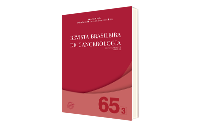Research on Cardiotoxicity in Patient Chart Submitted to R-CHOP Chemotherapy: a Case Study
DOI:
https://doi.org/10.32635/2176-9745.RBC.2019v65n3.314Keywords:
Cardiotoxicity, Doxorubicin/therapeutic use, Pharmacovigilance, Medical Records, Case ReportsAbstract
Introduction: Cardiotoxicity is one of the most significant effects of oncological treatment. Among the major relevant consequences, heart failure with systolic or diastolic ventricular dysfunction stands out. Case report: 39-year-old female patient with diffuse large B-cell non-Hodgkin's lymphoma who underwent rituximab, cyclophosphamide, doxorubicin, vincristine and prednisone (R-CHOP chemotherapy) and presented fatigue while exerting small efforts and increased blood pressure. The echocardiogram showed mild left ventricular dysfunction with diffuse hypokinesia and reduction of left ventricular ejection fraction (LVEF) associated with the possible cardiomyotoxicity of doxorubicin. The case was identified in a chart survey, and analyzed according to the Naranjo Algorithm, and then the severity of the adverse cardiovascular reactions was determined. Conclusion: This study highlights the importance of the active search for cardiovascular events in medical charts of patients undergoing cardiotoxic chemotherapy and the role of pharmacovigilance in this context.









